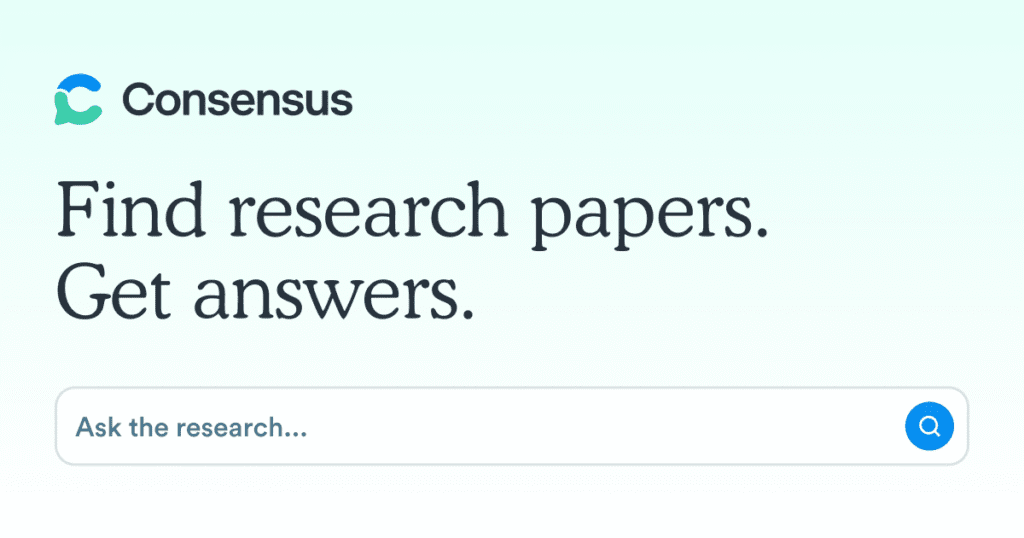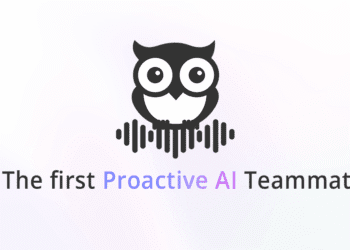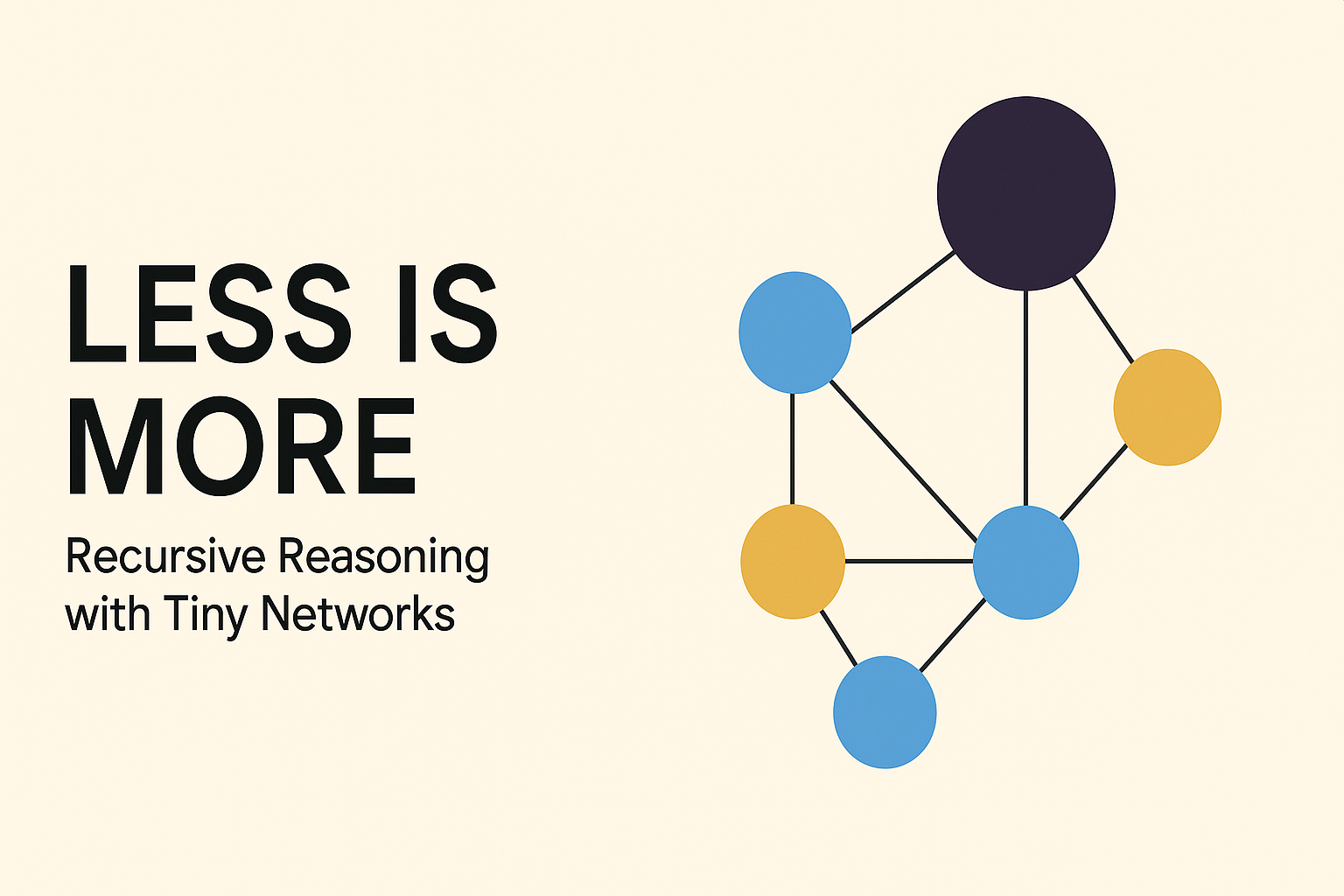We’re living in a time when there’s more research being published than ever before. Every year, millions of new studies get added to academic databases, but actually making sense of all this information is still incredibly time-consuming and complicated. That’s where Consensus comes in—it’s an AI-powered research tool that promises to cut through all the noise and give you clear, evidence-based answers to your questions.
Enter Consensus, an AI-powered research engine that audaciously promises to transmute this information chaos into crystalline, evidence-based answers.
The Genesis of Evidence-Based Enlightenment
Academic research has traditionally been an exercise in intellectual archaeology—scholars excavating through stratified layers of literature, meticulously sifting through citations, and painstakingly constructing arguments from disparate findings. This conventional methodology, while thorough, demands substantial temporal investment and often results in cognitive fatigue that can obscure rather than illuminate scientific truths.
Consensus.app emerges as a paradigmatic shift in this landscape. Unlike conventional search engines that regurgitate SEO-optimized listicles and commercially-biased content, Consensus operates exclusively within the realm of peer-reviewed academic literature—a sanctuary of intellectual rigor where evidence reigns supreme over opinion.
The platform’s foundational architecture rests upon an expansive repository of over 220 million peer-reviewed research papers, continuously updated monthly to ensure contemporary relevance. This colossal database spans multitudinous disciplines, from molecular biology to social psychology, creating an unprecedented aggregation of human knowledge.
Architectural Excellence: The Trinity of Innovation
Deep Search: The Intellectual Excavator
The platform’s crown jewel—Deep Search—represents a quantum leap in research methodology. Rather than executing superficial keyword matching, this sophisticated feature demonstrates genuine intellectual sophistication by deconstructing complex queries into constituent subtopics. This AI-powered research agent conducts comprehensive literature reviews across the entire 200-million-paper corpus, employing what the platform describes as a “chain of thought” approach.
When presented with multifaceted inquiries, Deep Search orchestrates a systematic investigation that mirrors human research methodology while vastly exceeding human processing capabilities. The system transparently displays its analytical process, revealing the intricate pathways through which it navigates the research landscape. This transparency combats the “black box” phenomenon that plagues many AI applications, allowing users to comprehend precisely how conclusions are derived.
The methodology encompasses:
- Initial survey phase: Conducting broad reconnaissance across relevant literature
- Focused investigation: Drilling down into specific mechanisms and evidence types
- Synthesis and analysis: Integrating findings into coherent, structured responses
- Citation mapping: Establishing comprehensive provenance for every claim
This systematic approach typically examines approximately 50 high-quality papers, though the exact number varies based on available evidence and relevance thresholds. The resulting output constitutes nothing short of a bespoke literature review, complete with methodological analysis, evidence strength assessment, and identified research gaps.
The Consensus Meter: Quantifying Scientific Agreement
Perhaps no feature better exemplifies Consensus’s innovative approach than the Consensus Meter—a revolutionary tool that transforms the nebulous concept of scientific consensus into quantifiable metrics. This feature addresses a fundamental challenge in research interpretation: determining where the scientific community stands on contentious issues.
The Consensus Meter employs sophisticated large language models to analyze the top 20 most relevant papers for any given yes/no question, classifying each study’s findings as “yes,” “no,” or “possibly.” This automated synthesis provides users with immediate insight into the prevailing scientific consensus, represented through an intuitive visual interface.
The system incorporates several protective mechanisms:
- Relevancy thresholding: Excluding papers that don’t adequately address the query
- Confidence filtering: Omitting results where classification certainty falls below acceptable standards
- Quality indicators: Highlighting the academic prestige of source journals
- Temporal analysis: Providing publication date distributions to assess recency
However, the developers maintain commendable transparency regarding limitations. The model exhibits approximately 10% misclassification rates, particularly with linguistically complex statements containing double negatives or convoluted phrasing. Additionally, the current iteration doesn’t weight papers by methodological quality—a critical limitation since meta-analyses should logically carry more evidentiary weight than individual case studies.
Pro Analysis: The Research Copilot Revolution
Pro Analysis represents Consensus’s ambitious foray into AI-assisted content creation. This feature transcends simple search functionality, operating as an intelligent research assistant capable of drafting evidence-based content across multiple formats.
Unlike generative AI tools that hallucinate information, Pro Analysis maintains unwavering fidelity to source materials. Every claim, every insight, every recommendation emerges directly from peer-reviewed literature, with comprehensive citations providing immediate verification pathways. This approach mitigates the notorious reliability issues plaguing generative AI while preserving the convenience of automated content creation.
The system excels at:
- Executive summary generation: Distilling complex topics into accessible overviews
- Literature review drafting: Creating structured, citation-rich academic content
- Comparative analysis: Juxtaposing competing theoretical frameworks
- Methodology explanations: Elucidating research design implications
- Gap identification: Highlighting unexplored research territories

The User Experience: Intuitive Sophistication
Despite its technological complexity, Consensus maintains remarkable user accessibility. The interface eschews academic intimidation in favor of Google-like simplicity—users simply input queries and receive structured, comprehensible responses. This design philosophy democratizes access to sophisticated research capabilities, making advanced literature analysis available to individuals regardless of their academic background.
The search experience unfolds through multiple phases. Initial queries yield rapid overviews with paper previews, allowing users to gauge relevance before committing to deeper analysis. Advanced filtering capabilities enable precision targeting based on study design, sample size, publication date, journal prestige, and geographic origin. These filters, powered by AI classification systems, represent substantial improvements over traditional keyword-based filtering approaches.
Individual paper interaction has been thoughtfully optimized. Users can access comprehensive study snapshots, download PDFs directly, generate citations in multiple formats (APA, MLA, Chicago), and bookmark papers for future reference. The recently introduced “Ask Paper” feature enables direct dialogue with individual research documents, allowing users to pose specific questions about methodology, statistical approaches, or interpretive nuances.
Quality Assurance: The Reliability Imperative
In an era of rampant misinformation, Consensus’s commitment to source quality represents a fundamental competitive advantage. The platform exclusively indexes peer-reviewed publications, creating an epistemic firewall against pseudoscientific content. This approach ensures that every search result has undergone rigorous academic vetting, though it doesn’t eliminate the possibility of flawed research appearing in reputable journals.
The quality assurance framework incorporates multiple dimensions:
- Journal prestige indicators: Highlighting publications from high-impact academic venues
- Study design classification: Identifying meta-analyses, RCTs, observational studies, and case reports
- Sample size reporting: Enabling users to prioritize adequately powered studies
- Recency filters: Balancing contemporary relevance with established findings
- Open access linking: Facilitating immediate full-text access where available
However, users must remain cognizant of inherent limitations. The platform’s 200-million-paper repository, while vast, doesn’t encompass all published research. Publication bias, particularly the tendency for positive results to achieve publication while negative findings remain in file drawers, may skew apparent consensus. Additionally, the monthly update cycle means that cutting-edge research may experience brief delays before incorporation.
Multilingual Capabilities: Global Knowledge Access
Consensus’s support for over 100 languages represents a remarkable achievement in research democratization. Users can pose queries in their native tongues while accessing the global corpus of scientific literature. The platform’s AI translation capabilities ensure that language barriers don’t impede scientific discovery, though nuanced terminological considerations may occasionally impact precision.
This multilingual approach extends beyond mere search functionality. Pro Analysis and summary features adapt their output language based on query language, enabling researchers worldwide to engage with scientific literature in their preferred idiom. This capability proves particularly valuable for non-native English speakers seeking to access predominantly English-language academic content.
Economic Accessibility: Tiered Value Propositions
Consensus employs a thoughtful freemium model that balances accessibility with sustainability. The free tier provides substantial functionality, including unlimited basic searches, 10 monthly Pro Analyses, 10 Study Snapshots, and access to the complete research database. This generous free offering enables students and casual researchers to experience the platform’s capabilities without financial barriers.
Premium subscriptions at $11.99 monthly remove all limitations, providing unlimited Pro Analyses, Study Snapshots, Ask Paper interactions, and bookmark storage. Student discounts of 40% acknowledge the financial constraints facing academic populations, while enterprise and team plans accommodate institutional requirements with centralized billing and administrative controls.
This pricing structure positions Consensus competitively against traditional research databases while offering substantially enhanced functionality. Considering that individual journal subscriptions often cost hundreds of dollars annually, Consensus’s comprehensive access model represents exceptional value.
Performance Insights: Real-World Validation
The platform’s practical efficacy becomes apparent through direct usage scenarios. When querying complex topics like “Does creatine help muscle growth?” the system demonstrates remarkable analytical sophistication. Rather than simply retrieving relevant papers, Consensus synthesizes findings across methodological approaches, population types, and outcome measures.
The resulting analysis might reveal that 90% of examined studies support creatine’s efficacy, while simultaneously highlighting important caveats regarding dosage protocols, timing considerations, and population-specific variations. This nuanced approach mirrors expert-level literature interpretation while remaining accessible to non-specialists.
Research gap identification represents another powerful capability. The platform’s Research Gaps Matrix systematically identifies unexplored intersections within research domains, potentially guiding future investigation directions. This feature proves invaluable for researchers seeking novel research questions or funding agencies prioritizing understudied areas.
Competitive Landscape: Distinctive Advantages
The academic search engine space includes various players, from Google Scholar’s comprehensive indexing to specialized databases like PubMed’s medical focus. Consensus differentiates itself through several key dimensions:
AI-Native Architecture: While competitors retrofit AI capabilities onto existing frameworks, Consensus was designed from inception as an AI-powered research assistant. This foundational approach enables more sophisticated analytical capabilities and superior user experiences.
Evidence Synthesis: Rather than simply retrieving relevant papers, Consensus actively synthesizes findings across multiple sources. This synthesis capability transforms information discovery into insight generation.
Consensus Quantification: The Consensus Meter’s ability to quantify scientific agreement represents a unique capability absent from traditional academic databases.
Quality-First Approach: The platform’s exclusive focus on peer-reviewed content creates superior signal-to-noise ratios compared to general-purpose search engines.
Technological Innovation: The AI Advantage
Consensus leverages cutting-edge natural language processing and machine learning technologies to achieve its sophisticated analytical capabilities. The platform employs transformer-based language models, vector similarity search, and ensemble classification techniques to deliver precise, contextually relevant results.
The system’s ability to understand research methodology represents particular technical sophistication. It can distinguish between observational studies and randomized controlled trials, recognize meta-analyses and systematic reviews, and appropriately weight evidence based on study design quality. This methodological awareness ensures that users receive appropriately contextualized information rather than misleading oversimplifications.
Vector-based semantic search capabilities enable the platform to understand conceptual relationships beyond keyword matching. Users can search for synonymous concepts, related phenomena, and theoretical frameworks without mastering specialized academic terminology.
Limitations and Areas for Enhancement
Despite its impressive capabilities, Consensus exhibits several limitations that users should acknowledge. The platform’s reliance on published literature means that unpublished studies, preprints, and grey literature remain invisible. This limitation can be particularly problematic in rapidly evolving fields where traditional publication cycles lag behind scientific developments.
The current inability to weight papers by methodological quality represents another significant constraint. Meta-analyses and large-scale RCTs should logically receive greater evidentiary weight than small observational studies, yet the current Consensus Meter treats all papers equivalently.
Language model limitations occasionally manifest in misclassified results, particularly for complex linguistic constructions. While the 10% error rate represents substantial accuracy, critical applications may require human verification of AI-generated insights.
Future Trajectories: Evolutionary Pathways
Consensus’s roadmap suggests continued innovation across multiple dimensions. Enhanced quality weighting systems will likely incorporate journal impact factors, citation counts, and methodological rigor assessments. Real-time preprint integration could accelerate access to cutting-edge findings while maintaining appropriate caveats regarding preliminary results.
API availability opens possibilities for integration with institutional research workflows, enabling organizations to embed evidence-based insights directly into their operational processes. Custom pricing models starting at $0.01 per call plus platform fees make enterprise integration economically viable.
Expanded disciplinary coverage and improved multilingual capabilities will further democratize research access. Enhanced visualization tools for research trends, citation networks, and collaboration patterns could provide additional analytical value.
The Verdict: Transformative Research Infrastructure
Consensus represents a paradigmatic shift in research methodology—transforming literature review from laborious manual processes into intelligent, AI-assisted discovery. The platform’s sophisticated analytical capabilities, comprehensive database coverage, and commitment to evidence-based insights position it as an indispensable tool for contemporary researchers.
While limitations exist, they pale in comparison to the platform’s transformative benefits. The ability to rapidly synthesize findings across vast literature corpuses, quantify scientific consensus, and generate evidence-based content represents unprecedented research efficiency gains.
For students navigating their first literature reviews, researchers exploring new domains, healthcare professionals seeking clinical evidence, and curious individuals pursuing scientific understanding, Consensus offers unparalleled value. The platform successfully democratizes access to sophisticated research capabilities while maintaining rigorous quality standards.
The future of research discovery is undoubtedly AI-assisted, and Consensus has established itself as the definitive leader in this evolutionary transformation. As the platform continues to evolve and expand its capabilities, it will likely become as fundamental to research workflows as search engines have become to general information discovery.
In an era where information abundance threatens to overwhelm rather than enlighten, Consensus provides the analytical sophistication necessary to transform raw data into actionable insights. For anyone serious about evidence-based decision making, this platform represents not merely a tool, but a paradigm shift toward more intelligent, efficient, and reliable research practices.
👉 Start with Consensus free, or unlock 1 month of Pro free with my link: https://get.consensus.app/kingyAI










